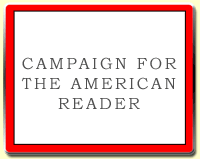 award and the Lucy Cavendish Fiction Prize for The Daughter, her first novel. She and her husband, a professor of neurosurgery, have five children and live in Bristol, England.
award and the Lucy Cavendish Fiction Prize for The Daughter, her first novel. She and her husband, a professor of neurosurgery, have five children and live in Bristol, England.
Shemilt's new novel is The Patient.
At CrimeReads the author tagged five books that
reflect the age in which they were written; if mental illness is diagnosed by doctors it is also defined by society because society decides what makes behaviour unusual, undesirable or even ‘mad.’One title on the list:
Jane Eyre, by Charlotte Bronte published in 1848Read about the other entries on the list at CrimeReads.
The story, set in the Victorian era, concerns Jane Eyre, an orphan sent by relatives to live in an orphanage which she leaves as a young woman when she finds employment as a governess to the ward of the Mr Rochester at Thornfield Hall, a place of mystery that appears haunted. Against this ghostly drop back, Jane and Edward Rochester fall in love but on the point of marriage to Mr Rochester, he is is revealed to have a mad wife, Bertha living under lock and key at Thornfield Hall. Jane leaves, returning at the end of the story to find Mr Rochester alone andblinded after a vain attempt to save Bertha as she was in the act of burning down the hall. The two marry.
Madness as embodied in the form of Bertha, the first wife, contributes narratively crucial elements of gothic suspense and intrigue; the reader is made aware, as Jane is, of laughter and footsteps in Thornfield, culminating in danger and horror. This gives the story its power and is key to the narrative arc, being the reason for the mystery and why Jane cannot marry and has to escape.
However, there are unsettling elements to this enduring story: the mad woman is described as animal-like, with wild hair and disheveled appearance, locked in a windowless room. To modern sensibilities this is a sensationalist and stereotypical portrait of a woman with a mental illness, whose punishment was essentially a social construct; those who were considered mad were indeed locked up without any documentation. Insanity was portrayed as bad and certainly dangerous. However, by the time Jane Eyre was actually published, this view was already out of step with current attitudes of the day as political awareness was changing and a commission had been set up by the government to look into the treatment of mentally ill with the finding that it was important change the environments in which they were held.
Jane Eyre also made Lucy Ellmann's top ten list of gripes in literature, Elizabeth Brooks’s list of ten of the creepiest gothic novels, Kate Kellaway's list of the best romantic novels that aren’t riddled with cliches, Julia Spiro's list of seven titles told from the perspective of domestic workers, Jane Healey's list of five favorite gothic romances, Annaleese Jochems's list of the great third wheels of literature, Sara Collins's list of six of fiction's best bad women, Sophie Hannah's list of fifteen top books with a twist, E. Lockhart's list of five favorite stories about women labeled “difficult,” Sophie Hannah's top ten list of twists in fiction, Gail Honeyman's list of five of her favorite idiosyncratic characters, Kate Hamer's top ten list of books about adopted children, a list of four books that changed Vivian Gornick, Meredith Borders's list of ten of the scariest gothic romances, Esther Inglis-Arkell's top ten list of the most horribly mistreated first wives in Gothic fiction, Martine Bailey’s top six list of the best marriage plots in novels, Radhika Sanghani's top ten list of books to make sure you've read before graduating college, Lauren Passell's top five list of Gothic novels, Molly Schoemann-McCann's lists of ten fictional men who have ruined real live romance and five of the best--and more familiar--tropes in fiction, Becky Ferreira's lists of seven of the best fictional depictions of female friendship and the top six most momentous weddings in fiction, Julia Sawalha's six best books list, Honeysuckle Weeks's six best books list, Kathryn Harrison's list of six favorite books with parentless protagonists, Megan Abbott's top ten list of novels of teenage friendship, a list of Bettany Hughes's six best books, the Guardian's top 10 lists of "outsider books" and "romantic fiction;" it appears on Lorraine Kelly's six best books list, Esther Freud's top ten list of love stories, and Jessica Duchen's top ten list of literary Gypsies, and on John Mullan's lists of ten of the best governesses in literature, ten of the best men dressed as women, ten of the best weddings in literature, ten of the best locked rooms in literature, ten of the best pianos in literature, ten of the best breakfasts in literature, ten of the best smokes in fiction, and ten of the best cases of blindness in literature. It is one of Kate Kellaway's ten best love stories in fiction.
The Page 99 Test: Jane Eyre.
--Marshal Zeringue



